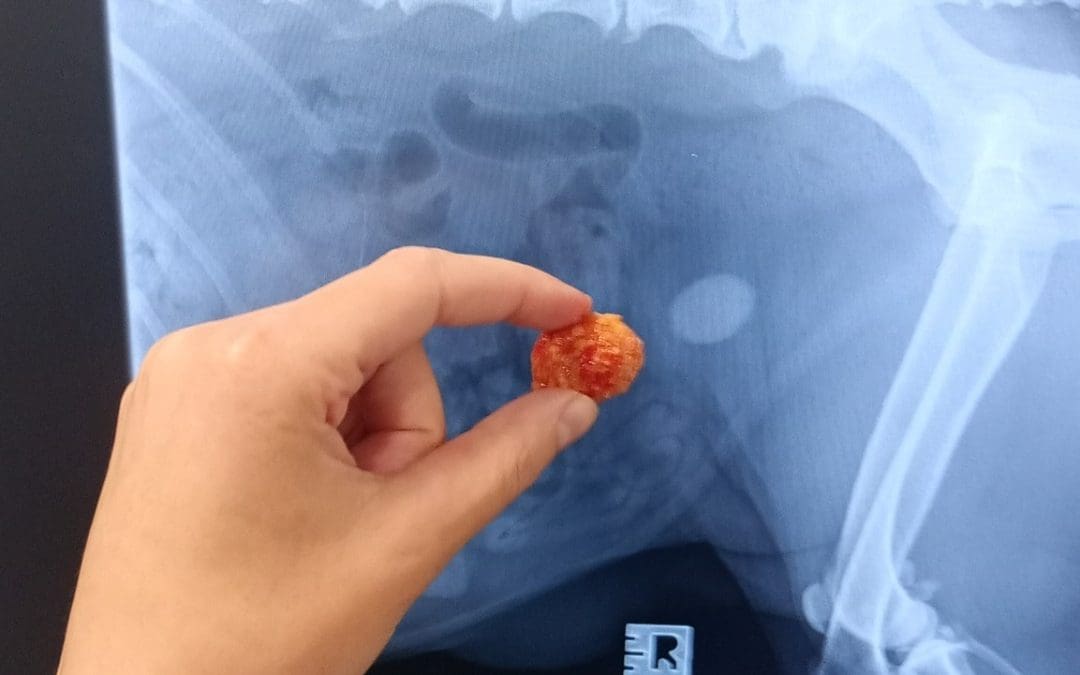Small crystals in urine can eventually form larger bladder stones (uroliths or cystic calculi) if the conditions within the bladder are appropriate for them. There may be a large, single stone, or a collection of stones that range in size from sand-like grains to gravel and comprised of differing minerals.
Signs of bladder stones mirror those of typical ‘cystitis’ or simple urinary tract infection and cannot always be felt on palpation alone. Symptoms include straining or inability to urinate, bloody urine, or pain when urinating. Most pets with a urinary tract infection do not have bladder stones, so vets do not assume the presence of bladder stones based only on these clinical signs.
Bladder stones can develop within a few weeks or may take months to form. The rate of urolith formation and growth varies, depending on factors such as diet, urine pH, and how much crystalline material is present in the urine.
If the vet is suspicious of bladder stones, a urine sample will be taken from your pet to look for infection, crystals and signs of blood. This will be followed by imaging of your pet’s bladder. Most bladder stones are visible on radiographs, or by an ultrasound exam of the bladder, depending on the type.
There are three main treatment options for bladder stones: surgical removal, non-surgical removal, and dietary dissolution. The specific treatment recommended for your pet will depend on the type of stone (or crystals) present. Your vet will discuss the pros and cons of each treatment option with you in more detail, based on your pet’s individual circumstances. Early recognition may allow your vet to adjust your pet’s diet or medication before the need for surgery.
Stones that cause blockages of the urethra are considered an emergency. If your pet (especially male cats) is unproductively straining to urinate, please contact the surgery as soon as possible on 01423 900449

